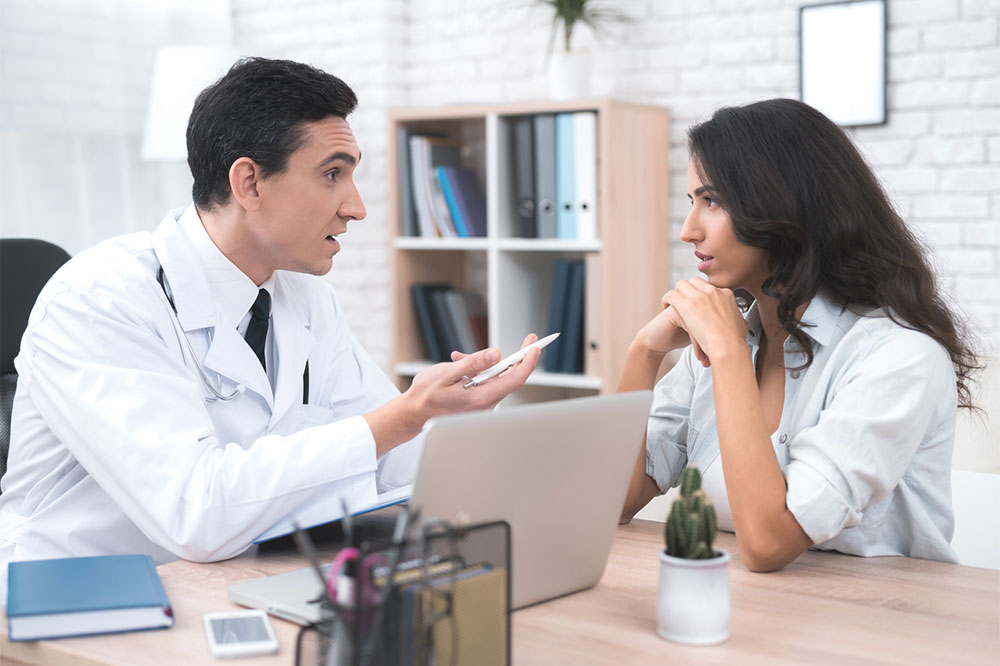Bleeding disorders – Steps to prevent complications

Blood clotting, known as coagulation, is a process where platelets and plasma proteins combine to clot the blood to prevent excessive bleeding in case of an injury. However, sometimes individuals may not have enough clotting factors due to some disorders. Bleeding disorders are chronic and are either congenital or acquired. There are many disorders that can arise from this condition. Know how to prevent complications that may arise from different bleeding disorders.
Inherited bleeding disorders
Inherited bleeding disorders are genetic and happen when there is some damage or deficiency in specific genes that control clotting. The inherited bleeding disorders are:
- Combined deficiency of vitamin K-dependent clotting factors
- Hemophilia A
- Hemophilia B
- Hemophilia C
- Hereditary hemorrhagic telangiectasia
- Rare bleeding disorders with deficiency of clotting factors
- Von Willebrand disease
Acquired bleeding disorders
Acquired bleeding disorders happen if a disease or treatment has led to less or no production of the clotting factors. It can also occur if there is damage to any blood vessel, causing excessive bleeding. Acquired bleeding disorders include:
- Arteriovenous malformation where blood vessels may get tangled
- Disseminated intravascular coagulation
- Liver disease–associated bleeding
- Rare cases of Von Willebrand disease and hemophilia
- Vitamin K deficiency bleeding
Symptoms of bleeding disorders
The common symptoms of different bleeding disorders include:
- Easy bruising
- Heavy bleeding in case of injury
- Nosebleeds that do not stop easily
- Excessive menstrual bleeding
- Excessive bleeding during surgery or tooth extraction
- Bleeding in the umbilical cord after birth
- Bleeding into joints and pains.
- Bloody urine or stools
Complications of bleeding disorders
A person diagnosed with a bleeding disorder needs to be careful all the time as there is no cure for the condition yet. Doctors cannot predict when an internal bleed can happen. They must take utmost care to prevent accidents, cuts, bruises, and injuries. Bleeding disorders can lead to the following complications:
- Pain
People diagnosed with a bleeding disorder may have acute pain if there is bleeding into joints and muscles. They have chronic pain if they have long-term joint damage.
- Joint damage
One of the most common bleeding disorder complications is damage to the joints and muscles. It can cause severe pain, stiffness, and deformity. Patients may have arthritis and need lifelong treatment and care.
- Inhibitors
One basic treatment for bleeding disorders is an infusion of clotting factor concentrates. An inhibitor is an antibody that may consider the clotting factor as a foreign body and neutralize it. This makes the therapy ineffective. Doctors may have to continue the factor replacement therapy to increase the number of clotting factors.
- Bleeding in the brain
Though rare, people with bleeding disorders risk spontaneous bleeding in the brain. People with a severe form of a bleeding disorder are at risk of a brain bleed after a bump or a fall. They could experience memory loss or have episodes of epilepsy, and some may have balance and coordination problems depending on the bleed’s location. Bleeding in the central nervous system can lead to stroke.
Prevention of complications
Inherited bleeding disorders cannot be prevented. Doctors suggest several ways affected people can take to avoid or minimize the risk of complications that may arise from the various bleeding disorders. They are:
- Follow your treatment plan
Doctors recommend periodic, half-yearly, or yearly examinations to monitor overall health. They thoroughly examine the joints, bones, and muscles to check for internal bleeding. They also do a blood examination to check for factor levels and the presence of inhibitors. Do not miss any appointment if you do not have symptoms. Continue to receive routine follow-up care without fail, as this can be crucial to ensure your symptoms do not worsen.
- Treat bleeding without delay
In the event of an injury, take factor concentrates immediately without delay. Always carry your identification card with you without fail.
- Prophylactic therapy
Doctors may recommend taking a clotting factor replacement therapy before surgery or any sports activity that may cause a bleed. Some opt to inject themselves with clotting factors regularly, sometimes thrice a week, to prevent bleeding. Adults can take this injection at home. If you previously had bleeding in a joint, doctors may recommend a preventive infusion of clotting factors. Doctors recommend this for children who have moderate to severe bleeding disorders.
- Pain management
Physical therapy and exercise can help control or reduce severe joint pain and swelling. Joint replacement therapy can be a solution for those with severe pain or arthritis that may lead to mobility issues or difficulty using a limb.
Preventive measures for pregnant women
A team of doctors, including an obstetrician, a hematologist, and an anesthesiologist, monitor women with a bleeding disorder. They monitor the level of clotting factors during pregnancy. Generally, pregnant women may have less bleeding as their high hormonal levels may stimulate the production of clotting factors. Before delivery, doctors administer specific treatments to prevent excessive bleeding. Since the baby is also at higher risk, most doctors aspire for a natural delivery. They avoid an epidural or suction extraction of the baby. They also avoid using C-section delivery and unnecessary cutting of the skin near the vagina to prevent it from tearing.
Changes in lifestyle
A balanced meal regimen, exercise, and treatment can help a patient cope with bleeding disorders. Though there are no specific foods, eating healthy and consciously can be beneficial. Regular exercise can help find relief from stiffness and pain that they may feel in their joints and muscles.






